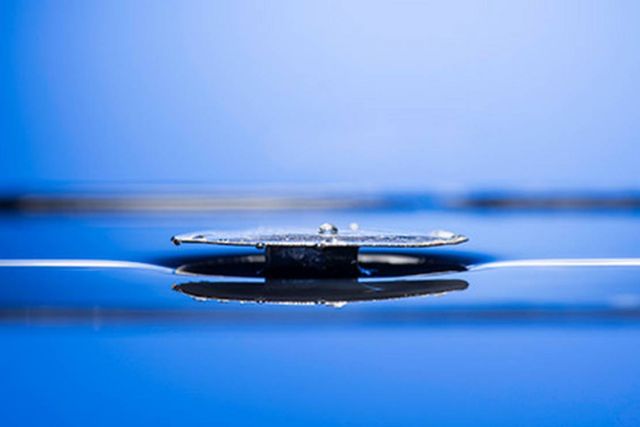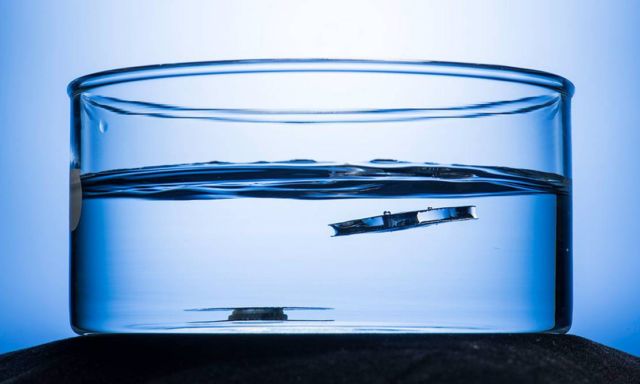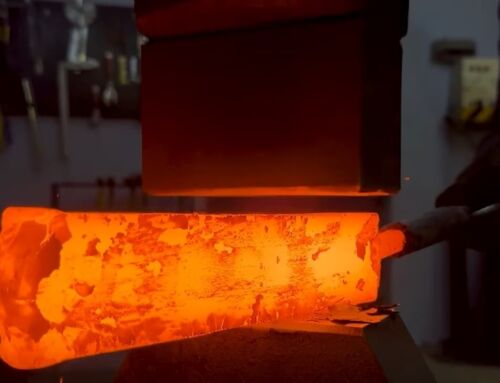Scientists create spiders and ants inspire metal that won’t sink or stay submerged under water.
University of Rochester researchers, inspired by diving bell spiders and rafts of fire ants, have created a metallic structure that is so water repellent, it refuses to sink—no matter how often it is forced into water or how much it is damaged or punctured.
Could this lead to an unsinkable ship? A wearable flotation device that will still float after being punctured? Electronic monitoring devices that can survive in long term in the ocean?
All of the above, says Chunlei Guo, professor of optics and physics, whose lab describes the structure in ACS Applied Materials and Interfaces.
The structure uses a groundbreaking technique the lab developed for using femtosecond bursts of lasers to “etch” the surfaces of metals with intricate micro- and nanoscale patterns that trap air and make the surfaces superhydrophobic, or water repellent.
The researchers found, however, that after being immersed in water for long periods of time, the surfaces may start to lose their hydrophobic properties.
Enter the spiders and fire ants, which can survive long periods under or on the surface of water. How? By trapping air in an enclosed area. Argyroneta aquatic spiders, for example, create an underwater dome-shaped web—a so-called diving bell— that they fill with air carried from the surface between their super-hydrophobic legs and abdomens. Similarly, fire ants can form a raft by trapping air among their superhydrophobic bodies.
“That was a very interesting inspiration,” Guo says. As the researchers note in the paper: “The key insight is that multifaceted superhydrophobic (SH) surfaces can trap a large air volume, which points towards the possibility of using SH surfaces to create buoyant devices.”
Images credit University of Rochester
source University of Rochester







Leave A Comment